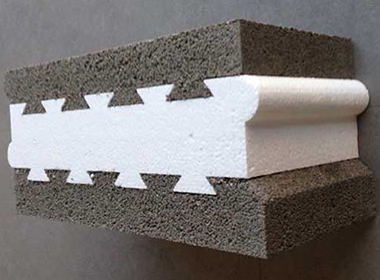
Do you want to know more about The evolution of concrete?
An unsung hero of civil engineering, concrete technology is responsible for everything from skyscrapers that reach for the stars to intricate bridges that span vast rivers. It"s easy to forget the extraordinary role this stuff plays behind the scenes in creating the world we live in today. We go to talk about The evolution of concrete.
Cities are built on a bedrock of concrete, a composite material made of cement, aggregates, water, and additives. Engineers can shape it into any number of structures, and thanks to its exceptional strength, those structures will last for a very long time.
The design, construction, and maintenance of buildings, bridges, roads, and other structures have all been profoundly affected by the innovations and enhancements made possible by evolution of concrete technology.

Concrete technology innovations
New materials and methods made possible by advancements in concrete technology have expanded the field"s potential applications.
Self-healing concrete
Microorganisms or capsules containing healing agents are embedded in self-healing concrete to mend fissures and other damage. This innovation helps cement buildings last longer, requiring fewer fixes and maintenance over time.
High-strength concrete
High-performance concrete uses advanced materials and mixed designs to achieve strength, durability, and workability. It"s used in high-rise buildings, bridges, and performance-enhancing structures.
Ultra-high-performance concrete
Ultra-high-performance concrete is unparalleled in its toughness and longevity. It has exceptional compressive strength, high impact resistance, and long service life. This concrete is used in highly specialized infrastructure projects that need to function reliably even in the harshest environments.
Sustainable concrete solutions
Concrete technology provides several eco-friendly solutions, becoming increasingly important in modern construction practices as sustainability takes centre stage.
Green concrete
Green concrete uses by-products from industry and other recycled materials to reduce carbon emissions. This eco-friendly method also seeks to cut down on the amount of water, cement, and other raw materials used and the amount of waste created when making concrete.
Recycled concrete
Used concrete aggregate uses recycled concrete to reduce the demand for a new total. Both natural resources and landfill waste are reduced thanks to this method.
Concrete composition and properties
Several essential ingredients contribute to the properties and functionality of concrete. Achieving desired results in building projects requires an understanding of these factors.
Cement
In making concrete, cement serves as the glue that keeps everything together. Together with water, it causes a chemical reaction that sets and hardens concrete. The durability and strength of a structure depend critically on the cement used.
Aggregates
Sand, gravel, and other aggregates are essential to the strength and durability of concrete. They take up a lot of room and add to the durability of the whole thing. The aggregates used in the concrete must be carefully chosen and graded to achieve the desired results.
Water
The chemical reaction between cement and water that causes concrete to harden begins with water. Therefore, the workability, strength, and curing of the concrete were all impacted by the quantity and quality of the water used.
Admixtures
Admixtures are chemical additives that improve concrete"s performance and properties. They allow for more precise management of concrete"s behaviour by altering its setting time, workability, strength, and durability, among other properties.
Applications of concrete technology
The use of concrete technology is widespread in civil engineering, where it helps with the building and maintenance of a wide range of structures.
Buildings and skyscrapers
Due to its strength, fire resistance, and design flexibility, concrete is widely used in the construction of buildings and skyscrapers. Reinforced concrete and cutting-edge building practices make constructing landmark structures that define cityscapes possible.
Bridges and infrastructure
Bridges and other forms of infrastructure could only be built with concrete"s use. Heavy loads, environmental factors, and prolonged exposure to harsh conditions are no match for its strength and durability.
Roads and pavements
To make roads and pavements last, concrete technology is used. Concrete roads are durable, safe, and low maintenance.

Conclusions about The evolution of concrete
Civil engineering builds and maintains infrastructure with concrete technology. Concrete technology, sustainable solutions, and innovative methods create stronger, more resilient, and eco-friendly structures. Concrete technology will help civil engineering adapt to modern society.

